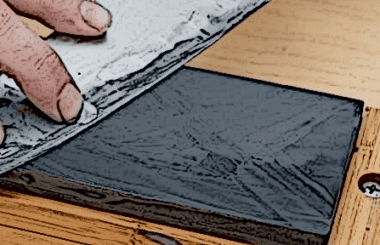Mastering the Edge: A Comprehensive Guide to Sharpening Knives for Various Blade Shapes

Mastering the Edge: A Comprehensive Guide to Sharpening Knives for Various Blade Shapes
Introduction:
The art of sharpening a knife is a fundamental skill that every outdoor enthusiast should master. A sharp knife not only enhances cutting efficiency but also ensures safety by reducing the risk of slips and mishaps. The correct sharpening technique varies based on the blade shape, and understanding these nuances is crucial for maintaining a keen edge. In this guide, we will explore the step-by-step process of sharpening knives for different blade shapes, ensuring that your outdoor tools remain sharp and ready for any adventure.
Sharpening a Drop-Point Blade:
Gathering Materials:
Sharpening stone (coarse and fine grit)
Honing rod
Lubricating oil or water (depending on the type of stone)
Angle and Technique:
Lay the blade flat against the sharpening stone.
Maintain a consistent angle, usually around 20 degrees.
Using smooth, controlled strokes, move the blade across the stone, starting from the base to the tip.
Repeat on the other side of the blade to ensure even sharpening.
Honing:
After sharpening, use a honing rod to refine the edge and remove any remaining burrs.
Hold the rod at a slight angle and run the blade along its length, alternating sides.
Sharpening a Clip-Point Blade:
Materials:
Same as for the drop-point blade.
Angle and Technique:
Focus on the tip when sharpening, as the clip-point design requires attention to the fine point.
Use controlled strokes, applying slightly more pressure on the convex side of the blade.
Honing:
Pay extra attention to honing the tip to ensure optimal sharpness.
Sharpening a Tanto Blade:
Materials:
Same as for other blade shapes.
Angle and Technique:
Sharpen each edge separately, as the tanto blade typically has two distinct angles.
Use a consistent angle for each edge, ensuring that both sides are evenly sharpened.
Honing:
As with other blades, use a honing rod to refine the edges and remove any burrs.
Sharpening a Serrated Edge:
Materials:
Ceramic rod or tapered sharpening rod.
Sharpening stone (for maintaining the straight edge, if applicable).
Technique:
Place the rod between the serrations and follow the contour of the edge.
Focus on the areas near the base of the serrations where they meet the straight edge.
Honing:
For a combination edge, use a honing rod to maintain the straight section.
Sharpening a Wharncliffe Blade:
Materials:
Sharpening stone.
Angle and Technique:
Lay the blade flat on the stone, as the Wharncliffe blade has a straight edge.
Maintain a consistent angle, typically around 20 degrees.
Honing:
Utilize a honing rod for the final touch, ensuring a sharp and stable edge.
Conclusion:
Whether you’re a seasoned outdoorsman or a novice camper, mastering the art of sharpening knives for different blade shapes is a valuable skill. Regular maintenance ensures that your knives remain reliable companions in the great outdoors, ready to tackle any cutting task that comes your way. By following these guidelines, you can achieve and maintain the optimal edge for your specific knife, enhancing both its performance and longevity.
Exploring the Wilderness: A Guide to Knife Blade Shapes for Outdoor Enthusiasts.
Exploring the Wilderness: A Guide to Knife Blade Shapes for Outdoor Enthusiasts
Embarking on outdoor adventures, whether hiking, camping, or surviving in the wilderness, demands a reliable and versatile tool—the knife. One of the critical factors that determine a knife’s performance is its blade shape. The diverse range of blade shapes available caters to various outdoor needs, from slicing and chopping to piercing and carving. In this guide, we will delve into the world of knife blade shapes, exploring their unique features and the scenarios in which they excel.
Drop Point: The drop-point blade is a common and versatile choice for outdoor enthusiasts. Its defining feature is a convex curve on the spine that slopes down to meet the point, creating a robust and controllable tip. This shape excels in tasks like slicing, carving, and general-purpose cutting. The broad belly of the blade enhances slicing efficiency, making it ideal for preparing food, processing wood, and performing everyday camp chores.
Clip Point: Characterized by a concave cutout on the spine, the clip-point blade offers a sharp, fine point suitable for detailed work. This design facilitates precision tasks such as piercing, slicing, and intricate carving. Outdoor enthusiasts who prioritize a versatile blade for both utility and finer tasks often gravitate toward the clip point. Its agility and piercing capability make it a valuable companion in various outdoor scenarios.
Tanto: Originating from Japanese sword designs, the tanto blade features a high point and a flat grind, creating a robust tip. This shape excels in piercing and is well-suited for tasks that require strength and durability. Outdoorsmen who value a knife for its tactical applications, such as self-defense or survival situations, often choose the tanto blade. Its sturdy design ensures reliability when faced with demanding cutting tasks.
Serrated Edge: For cutting through tough materials like rope or fibrous vegetation, a serrated edge proves invaluable. Serrations create small, jagged teeth along the blade, increasing the knife’s cutting efficiency. Knives with serrated edges are excellent for sawing through materials that might otherwise be challenging for straight-edged blades. However, for general-purpose cutting, a combination edge (partially serrated and partially plain) offers a balanced solution.
Wharncliffe: The Wharncliffe blade boasts a straight edge with a sharply pointed tip, providing excellent control for precision cutting. Its straight profile makes it easy to maintain and sharpen, while the flat cutting edge enhances stability during slicing tasks. Outdoor enthusiasts who require a dependable knife for detailed work, such as carving or crafting, often favor the Wharncliffe blade.
In the vast realm of outdoor activities, the right knife blade shape can make a significant difference. Understanding the unique characteristics of each blade shape allows outdoor enthusiasts to choose a tool that aligns with their specific needs and preferences. Whether navigating the wilderness or setting up a campsite, a well-chosen knife can be a reliable companion, enhancing the overall outdoor experience.
The Practical Advantages of Carrying a Knife for Personal Safety.
The Practical Advantages of Carrying a Knife for Personal Safety
Carrying a knife is a practice that has been embraced by individuals across various walks of life, and its utility extends beyond the realms of mere toolmanship. While the primary purpose of a knife is often rooted in its functionality, the act of carrying one can also contribute significantly to personal safety. In this discourse, we will explore the multifaceted reasons why having a knife on hand can enhance one’s sense of security in various situations.
One of the most evident advantages of carrying a knife is its versatility in tackling a myriad of everyday tasks. From opening packages to cutting through ropes, a well-designed and sharp knife can simplify numerous chores, reducing the need for improvised, potentially dangerous solutions. This versatility contributes to a more efficient and controlled environment, indirectly fostering a sense of safety in one’s day-to-day activities.
A knife serves as a valuable tool in emergency situations, enhancing one’s capacity to respond effectively. Whether it’s cutting a seatbelt in a car accident, breaking a window for escape, or crafting makeshift tools for survival, a knife can be an invaluable asset. The peace of mind that comes with knowing you have a versatile tool readily available in unexpected situations can significantly improve personal safety.
While self-defense is a contentious topic, the mere presence of a knife can act as a deterrent in certain situations. It provides a means of protection in instances where physical harm is imminent. It’s important to note that responsible ownership and adherence to legal regulations are paramount, and any consideration of a knife for self-defense should be accompanied by proper training and understanding of the laws governing such usage.
For those who engage in outdoor activities such as camping, hiking, or backpacking, a knife is an indispensable tool. Beyond its utility for tasks like cutting rope or preparing food, a knife enhances personal safety by providing a means of crafting shelter, starting a fire, or even signaling for help. In outdoor environments where resources are limited, a well-chosen knife can be the key to survival.
Carrying a knife also provides a tool of last resort in unforeseen circumstances. In situations where no other tools are available, a knife can be used to improvise solutions, from fixing a malfunctioning piece of equipment to fashioning necessary items. This resourcefulness can contribute to personal safety by offering a means of adapting to unexpected challenges.
In conclusion, carrying a knife offers practical benefits that extend beyond its utilitarian functions. The versatility of a well-crafted knife contributes to improved efficiency in everyday tasks, emergency preparedness, and even serves as a tool of last resort. While the discussion of personal safety involves a nuanced approach, a responsibly carried and utilized knife can play a role in enhancing one’s sense of security in a variety of situations. It is essential, however, to prioritize safety, legality, and proper training when considering the role of a knife in personal security.

